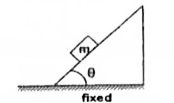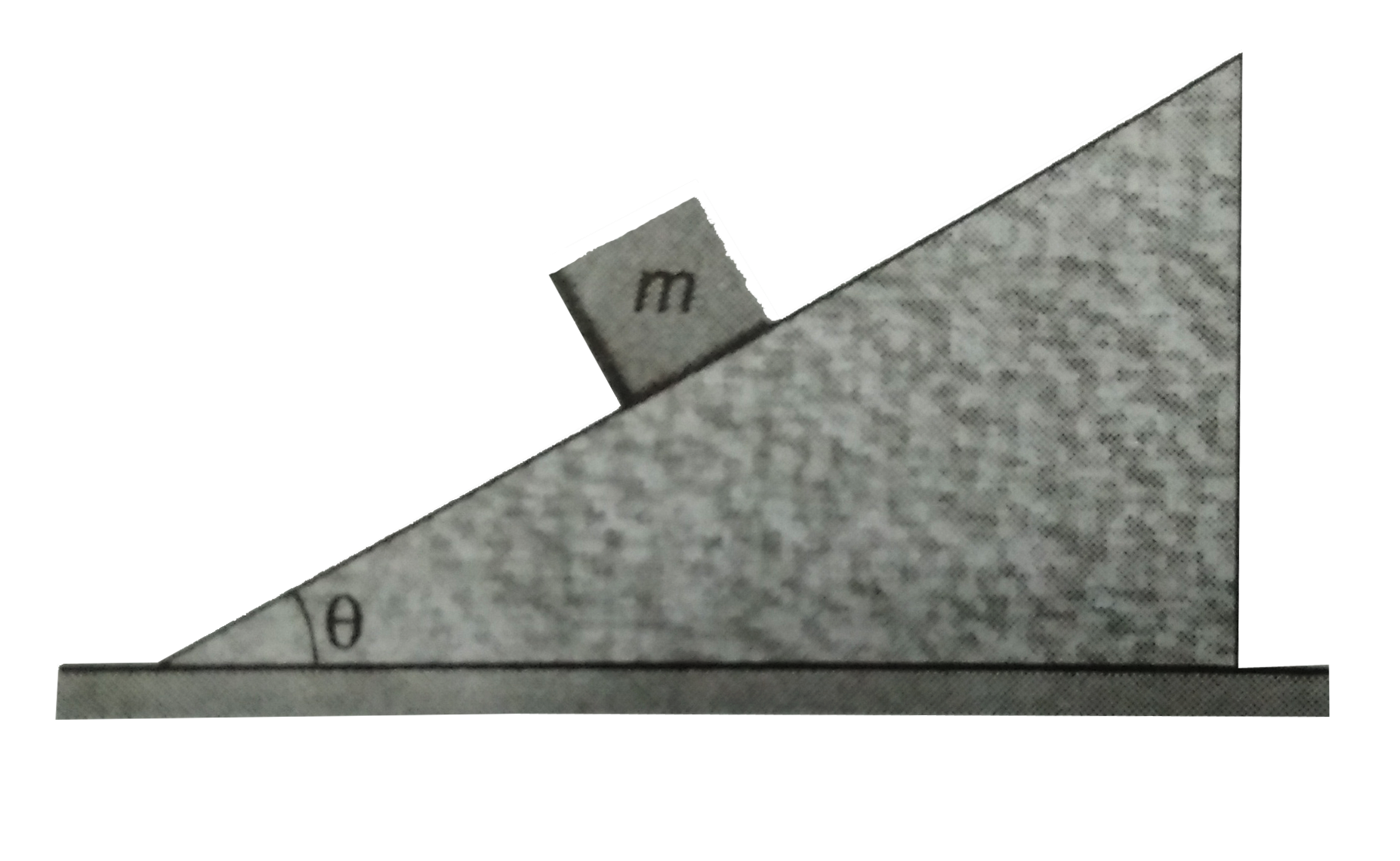A block of mass m1 lies on the top of fixed wedge as shown in fig. and another block of mass m2 lies on top of wedge which is free to move as shown in fig. At time t=0 both the blocks are released from rest from a vertical height h above the respective horizontal surface on which the wedge is placed as shown. There is no friction between block and wedge in both the figures. Let T1 and T2 be the time taken by the blocks respectively to just reach the horizontal surface. then

t1>t2
t2<t1
t1=t2
Nothing can be said None
The correct Answer is:A
Step by step video, text & image solution for A block of mass m_(1) lies on the top of fixed wedge as shown in fig. and another block of mass m_(2) lies on top of wedge which is free to move as shown in fig. At time t=0 both the blocks are released from rest from a vertical height h above the respective horizontal surface on which the wedge is placed as shown. There is no friction between block and wedge in both the figures. Let T_(1) and T_(2) be the time taken by the blocks respectively to just reach the horizontal surface. then by Physics experts to help you in doubts & scoring excellent marks in Class 12 exams.
Topper's Solved these Questions
- BOOK - RESONANCECHAPTER - DAILY PRACTICE PROBLEMEXERCISE - DPP No.249videos
DAILY PRACTICE PROBLEM
- BOOK - RESONANCECHAPTER - DAILY PRACTICE PROBLEMEXERCISE - DPP No.2520videos
DAILY PRACTICE PROBLEM
- BOOK - RESONANCECHAPTER - DAILY PRACTICE PROBLEMEXERCISE - DPP No.229videos
DAILY PRACTICE PROBLEM
- BOOK - RESONANCECHAPTER - CURRENT ELECTRICITYEXERCISE - High Level Problems (HIP)21videos
CURRENT ELECTRICITY
- BOOK - RESONANCECHAPTER - ELECTRO MAGNETIC WAVESEXERCISE - Exercise 327videos
ELECTRO MAGNETIC WAVES
Similar Questions
Knowledge Check
- Question 1 - Select One
A block of mass m1 lies on top of fixed wedge as shown in figure 1 and another block of mass m2 lies on top of wedge which is free to move as shown in figure 2. At time t=0, both the blocks are released from rest from a vertical height h above the respective horizontal surface on which the wedge is palced as shown. There is no friction betwen block and wedge in both the figures. Let T1 and T2 be the time taken by block in figure 1 and block in figure 2 respectively to just reach the horizontal surface then:
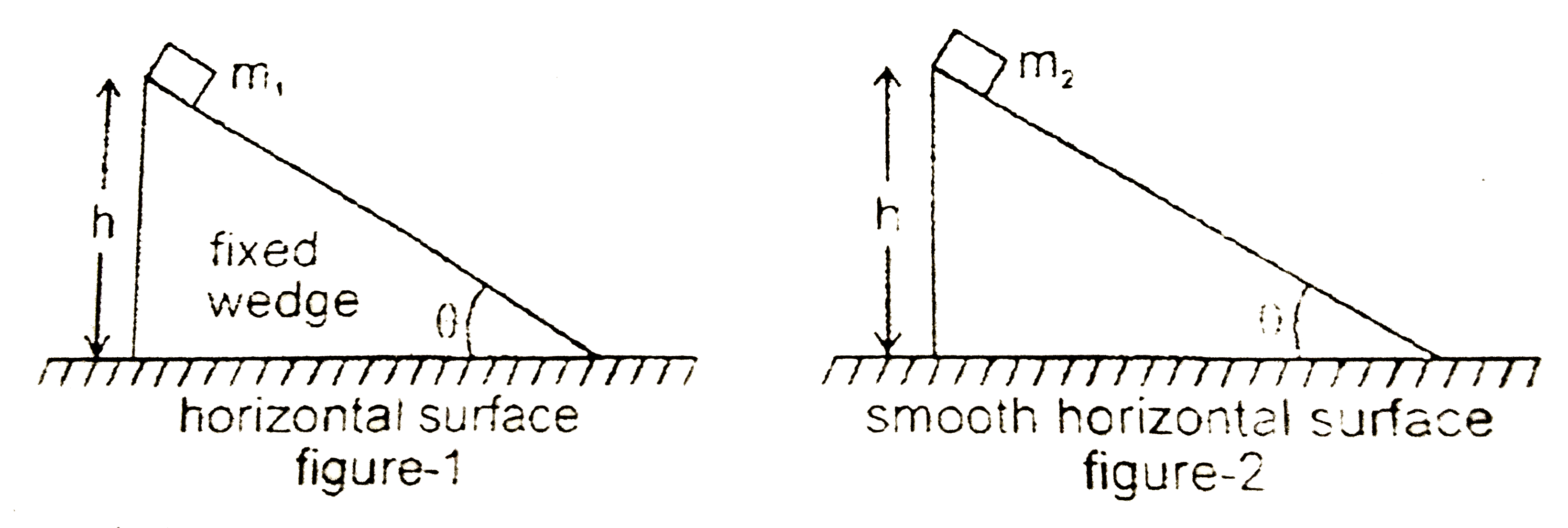 AT1>T2BT1<T2CMagnitude of normal reaction on block of mass m2 is equal to that on the block of mass m1DAfter falling through same height (less than h) from top of wedge, the speed of block of mass m2 is less than that of block of mass m1
AT1>T2BT1<T2CMagnitude of normal reaction on block of mass m2 is equal to that on the block of mass m1DAfter falling through same height (less than h) from top of wedge, the speed of block of mass m2 is less than that of block of mass m1 - Question 2 - Select One
A triangular wedge is placed on smooth horizontal surface. A block is placed on wedge as shown in the figure. Coefficient of friction between block and wedge is μ. Initially system reamins at rest.
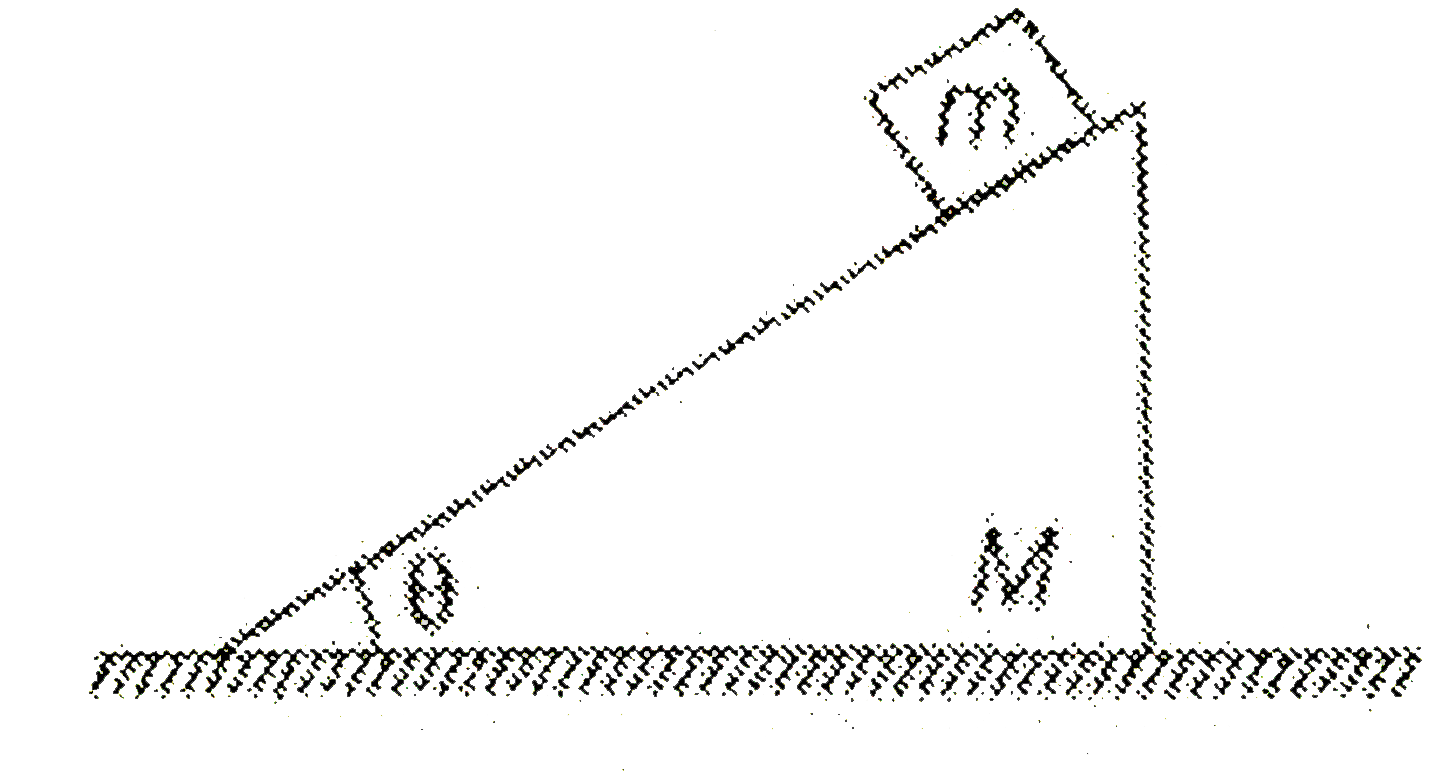 Aμ=tanθBμ=cosθCμ=1tanθDμ=sinθ
Aμ=tanθBμ=cosθCμ=1tanθDμ=sinθ - Question 3 - Select One
In the arrangement shown in fig. the block of mass m=2kg lies on the wedge of mass M=8kg. The initial acceleration of the wedge, if the surfaces are smooth, is
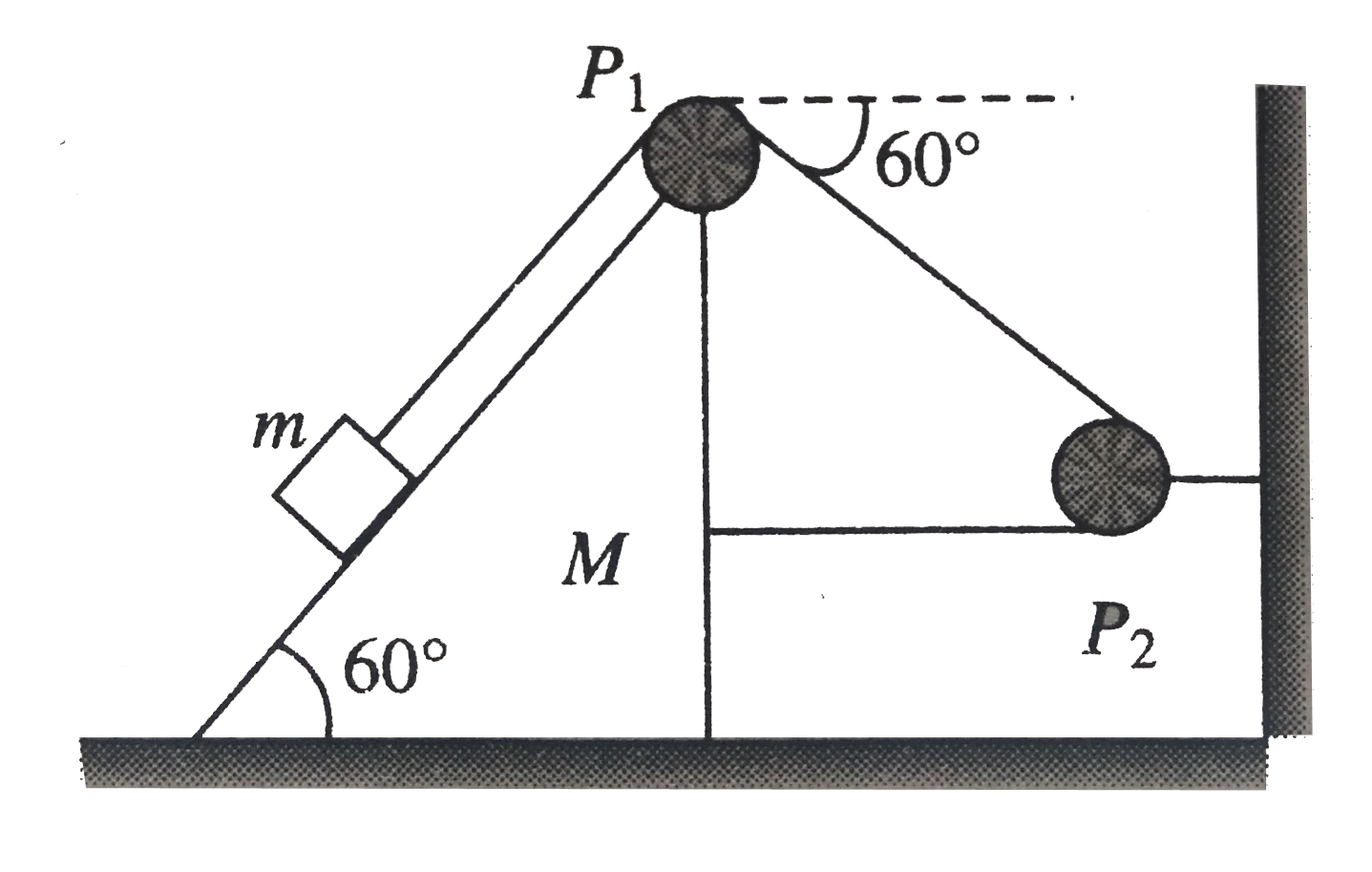 A√3g23ms−2B3√3g23ms−2C3g23ms−2Dg23ms−2
A√3g23ms−2B3√3g23ms−2C3g23ms−2Dg23ms−2
A block of mass m is released from a wedge of mass m as shown in figure . Find the time taken by the block to reach the end of the wedge.
 View Solution
View SolutionA wedge with mass M rests on a frictionless horizontal surface A block with mass m is placed on the wedge. There is no friction between the block and the wedge. A horizontal force f is applied to the wedge. What magnitude F must have if the block is to remain at constant height above the table top?
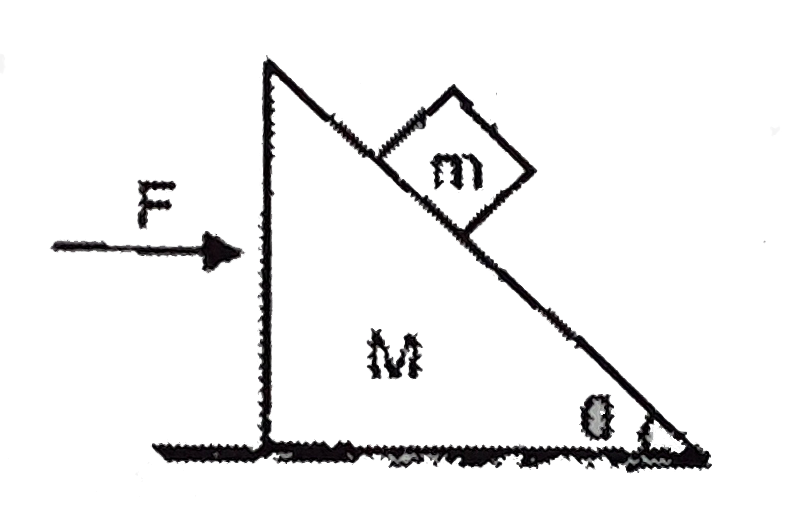 View Solution
View SolutionA block of mass m, is kept on a wedge of mass M, as shown in figure such that mass m remains stationary w.r.t. wedge. The magnitude of force P is
 View Solution
View SolutionA block of mass m is released from the top of a wedge of mass M as shown in figure. Find the displacement of wedges on the horizontal ground when the block reaches the bottom of the wedges. Neglect friction everywhere.
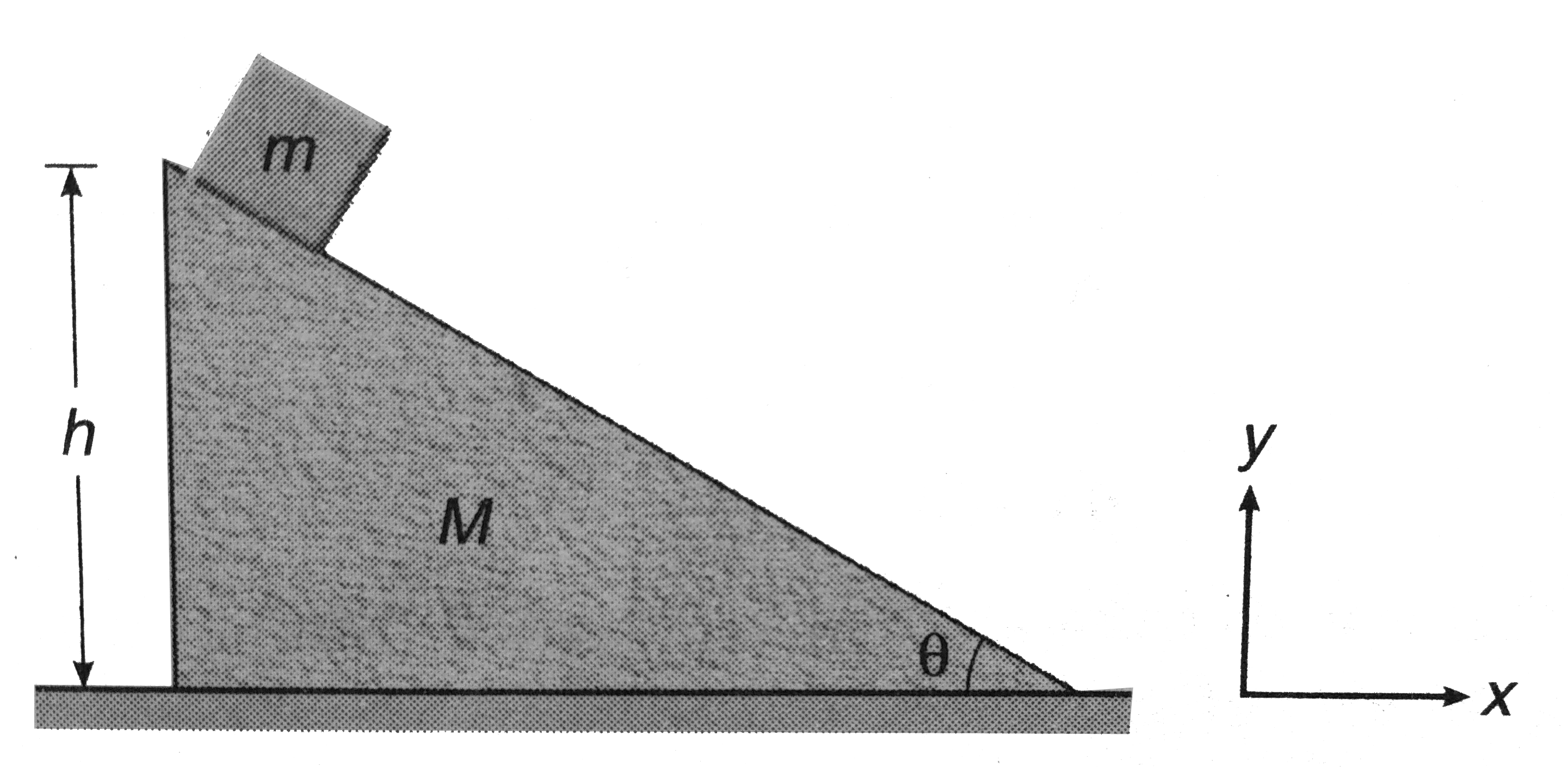 View Solution
View SolutionA small block of mass m rests on a smooth wedge of angle θ. With what horizontal accelaration a should the wedge be pulled, as shown in fig, so that the block falls freely?
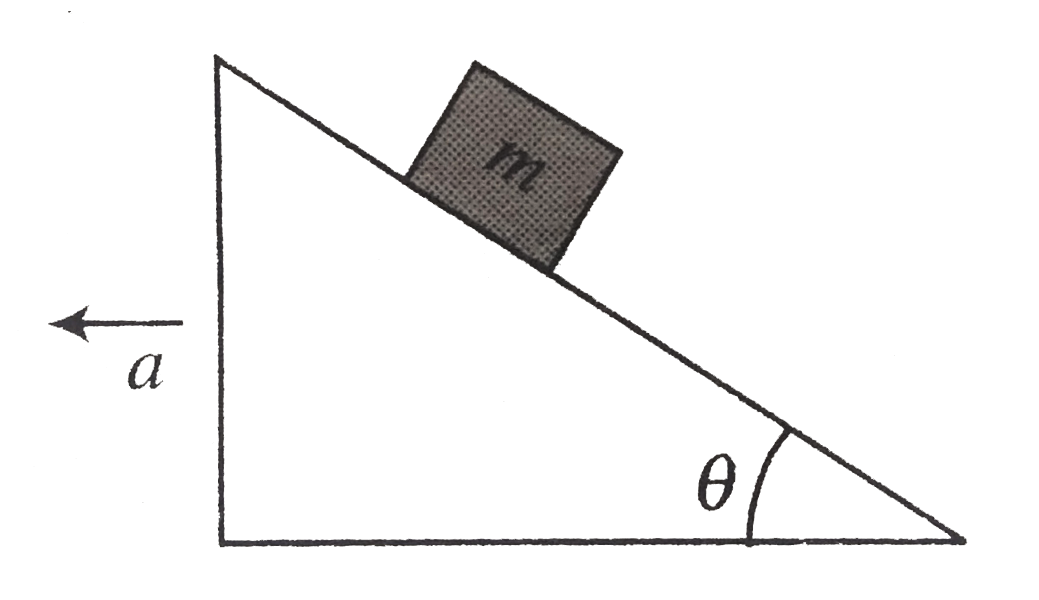 View Solution
View Solution


